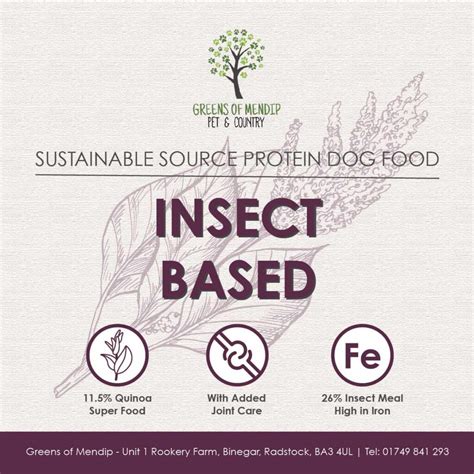The Rise of Insect-based Pet Food
In the evolving landscape of pet nutrition, insect-based pet food is gaining traction as a potential solution for the growing number of pets suffering from food sensitivities. According to the American Pet Products Association (APPA), pet food sales in the U.S. are projected to reach $117.6 billion by 2025, driven in part by the demand for specialized diets.

Insect-based Pet Food for Sensitivities
Food sensitivities occur when the immune system reacts to a specific protein in the diet, leading to symptoms such as skin irritation, gastrointestinal upset, and ear infections. Traditional pet foods often contain common allergens like chicken, beef, wheat, and soy, which can exacerbate sensitivities in predisposed pets.
Insect-based pet food offers a unique solution for sensitive pets. Insects, such as crickets and mealworms, contain high-quality protein with a low risk of allergenicity. Studies have shown that insect-based pet food is well-tolerated by the majority of dogs and cats, even those with severe food sensitivities.
Benefits of Insect-based Pet Food
- Hypoallergenic: Insects are less likely to trigger allergic reactions, making it a suitable option for pets with food sensitivities.
- High in protein: Insects are a rich source of digestible protein, which is essential for maintaining muscle mass and overall health.
- Sustainable: Insect farming requires significantly less land, water, and energy compared to traditional livestock production, making it a more environmentally sustainable option.
- Nutrient-dense: Insects contain a wide range of essential nutrients, including amino acids, vitamins, and minerals.
How to Choose Insect-based Pet Food
When choosing insect-based pet food, it is important to consider the following factors:
- Type of insect: Different insects have varying nutritional compositions. Crickets and mealworms are popular choices for pet food due to their high protein content.
- Quality: Look for insect-based pet foods that are produced with high-quality, human-grade insects.
- Nutritional value: Ensure that the pet food meets the nutritional requirements of your pet based on their age, activity level, and health conditions.
Transitioning to Insect-based Pet Food
To avoid digestive upset, it is recommended to gradually transition your pet to insect-based pet food over a period of 7-10 days. Start by mixing a small amount of insect-based food with their current food and gradually increase the ratio over time.
Conclusion
Insect-based pet food is a promising solution for pets suffering from food sensitivities. It offers a hypoallergenic, nutrient-dense alternative that can improve the well-being of pets. As the pet food industry continues to evolve, insect-based pet food is expected to play an increasingly important role in meeting the needs of sensitive pets.
Table 1: Comparison of Pet Food Allergies
| Allergen | Prevalence | Symptoms |
|---|---|---|
| Chicken | 10-15% | Skin irritation, itching, gastrointestinal upset |
| Beef | 5-10% | Dermatitis, ear infections, vomiting |
| Wheat | 2-5% | Skin lesions, digestive issues, respiratory problems |
| Soy | 1-3% | Bloating, gas, hyperactivity |
Table 2: Nutritional Composition of Insect-based Pet Food
| Nutrient | Insect-based Food | Traditional Pet Food |
|---|---|---|
| Protein | 60-70% | 30-40% |
| Fat | 15-25% | 10-20% |
| Fiber | 5-10% | 2-5% |
| Ash | 5-10% | 2-5% |
| Moisture | 10-15% | 60-70% |
Table 3: Benefits of Insect-based Pet Food for Sensitive Pets
| Benefit | Description |
|---|---|
| Hypoallergenic | Less likely to trigger allergic reactions |
| High in protein | Provides essential amino acids for muscle maintenance |
| Sustainable | Requires less land, water, and energy compared to livestock production |
| Nutrient-dense | Contains a wide range of vitamins, minerals, and antioxidants |
Table 4: Best Practices for Transitioning to Insect-based Pet Food
| Step | Description |
|---|---|
| Start gradually | Mix insect-based food with current food and increase the ratio over time |
| Monitor closely | Observe your pet for any signs of digestive upset |
| Be patient | It may take up to 10 days for your pet to adjust to the new diet |





















